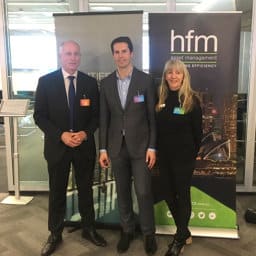WHAT IS NET ZERO?
Net zero emissions is achieved when the overall quantity of greenhouse gases a building or organisation emits into the atmosphere is reduced to zero. First emissions should be lowered as far as possible through efficiency measures and by sourcing energy from on-site renewable sources. The remaining unavoidable emissions produced through activities such as burning fossil fuels, for example when you burn gas or diesel on site or source electricity from the grid which in part comes from fossil fuel fired power stations, need to be removed from the atmosphere in order to achieve Net zero. This can occur through substitution or reduction activities such as sourcing off-site renewable energy or planting new forests, the impact of which is quantified using carbon credits.
HISTORY
As a signatory of the The Paris Agreement, Australia is one of 187 countries that have committed to keeping global temperature rise to well below 2°C. Political conflict around climate change policy has meant there is currently no commitment to a net zero target at the federal level however every Australian state and territory government and many large businesses have now publicly committed to achieving net zero carbon emissions.
According to a study by ClimateWorks Australia and The Monash Sustainable Development Institute (MSDI) this includes half of Australia’s largest listed property companies representing 36% of the ASX200 property sector.

THE IMPORTANCE OF A NETZERO STRATEGY
Achieving Net Zero emissions is an important step in responding to the climate change crisis. Setting a net zero target and having a clear emissions reduction strategy provides several significant benefits:
- Allows an organisation to reduce their environmental, social and governance (ESG) risk and increase their attractiveness to investors
- Provides a structured scientific approach to emissions monitoring and reduction which considers economic, social and environmental outcomes
- Allows emissions reduction strategies to be incorporated into more broad strategic planning processes
- Demonstrates a commitment to the market in addressing the negative impacts of climate change
- Creates alignment with other governments and organisations across the world who have also set net zero targets
HOW CAN HFM HELP YOU PREPARE AND IMPLEMENT YOUR NET ZERO STRATEGY?
HFM can assist your organisation develop a net zero strategy which outlines a pathway to transitioning to a low carbon future. We also provide ongoing tracking services to accurately your ongoing net zero claim.
HFM have partnered with other key industry organisations to provide services such as:
- Emissions data capture and measurement using cloud-based software
- Third party auditing and assurance of emissions reporting and net-zero claims
- Industry based certification schemes such as climate active and NABERS
- Broader ESG reporting according to the GRI reporting standards
TYPICAL PROCESS TO ACHIEVE NET ZERO CARBON EMISSIONS BY 2030
- Establish emissions boundary and determine your emissions inventory – Your emissions inventory will depend on whether you are planning to target Net Zero for a portfolio of buildings or for your organisation.
- Calculate your emissions baseline and setup data capture for ongoing measurement
- Prepare and implement your emissions reduction strategy
- Measure your progress and refine your emissions reduction strategy
- Certify with an industry standard
HFM is here to help you
For almost two decades, HFM has been helping clients achieve building efficiency and improve their sustainability performance. Our experienced team will be happy to share their knowledge and guide your team in the exciting journey towards Net Zero.
Contact us Australia-wide on 1300 021 420 or via email at: [email protected].














